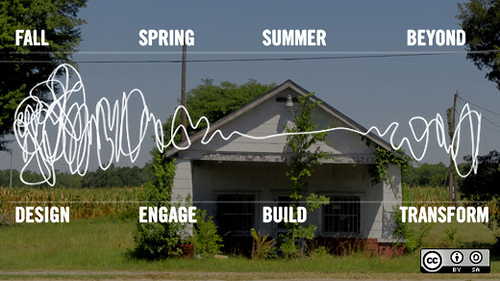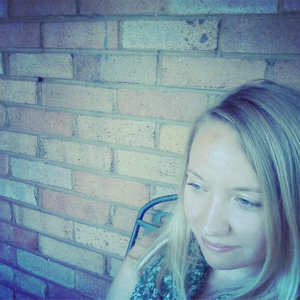Despite torrential rain and blustery winds, Saturday shaped up to be an invigorating second day here at SxSWi 2012. Some of the most interesting panel discussions at the Festival are those that present unique ideas for how our current social and economic problems can actually serve as catalysts for positive change.
Two sessions I attended on Saturday both played to this theme in very different ways. While one pointed out the growing movement to take high design beyond its elitist client base to solve complex social problems, the other encouraged those dissatisfied with the corporate job market to create their own passion-driven career.
Design for Social Innovation and Public Good
Traditionally, design, whether it be urban planning, architecture, or community development, has been left up to professionals with intimidating degrees and even more daunting day planners. These professionals, many of whom are elected or appointed public officials, spend their time putting out fires and trying to locate the most affordable solution to the problem at hand.
This pressure leaves little time for thoughtful contemplation of what's really driving the problems, and hinders the creation of long-term solutions that take the needs and desires of a community into account.
But as the distinguished panelists pointed out, design thinking can and should be used to address global challenges and engender social innovation at the city level.
"City officials tend to be incredibly decisive analytic thinkers, who make quick decisions about public opinions," said Jess Zimbabwe, Executive Director at the ULI Daniel Rose Center For Public Leadership in Land Use. "This is fine for getting things implemented quickly," she continued, "but none of those attributes contribute to a thoughtful design process for making cities better. In our program, we talk about research based experience, and take people out into the field to see what's working in other cities."
But exposure to new design ideas isn't always enough to innovate solutions. Bringing these designs into reality requires collaborative/interdisciplinary decision making, with no early judgements or assumptions. This can mean collaboration between the city and its citizens, organizations and private technology companies, or all of the above and more.
It's time to start rethinking the proper interaction between role of government and private design sector there. Doing so can reveal new opportunities for collaboration that allow people to use their talents civic engagement. It's also important for those involved in educating tomorrow's designers and public officials to emphasize the importance of collaboration in all aspects of the process.
"I'm passionate about teaching design in the interdisciplinary setting," said Barbara Brown Wilson, director of UT Austin's Center for Sustainable Development. "Translation is very important. You cannot be successful if you can't relay ideas in a simple, clear way. City officials must be able to argue for the value of thoughtful processes instead of just putting out fires or seeking public approval. Designers need to think about how to articulate their visions in a way that makes this easier."
Screw the Job Market: Young + Passionate ≠ Broke
Switching gears later in the day, I participated in a core conversation, which is far more intimate than your average SxSW panel. In a room with about 75 other young professionals, I had the pleasure of meeting two women who used failed or unfulfilling jobs to fuel their quest for a career about which they can be truly passionate.
Here on Shareable we've documented the challenges facing Generation Y as it searches for meaningful careers amidst a wretched job market. These stories provide anecdotal proof for what many experts already suspect: the old style of working and conducting business is dead, and today's young professionals are blazing their own trail toward a new definition of professional success.
Michelle Ward of When I Grow Up and Molly Mahar of Stratejoy are young, profitable, and passion-fueled full-time entrepreneurs. Their message to those who joined their conversation was that it is indeed possible to reject the expectations of past generations and pursue a career that will allow us to be true to ourselves while also paying the rent.
Members of the audience shared their fears about being tool old, too young, buried under debt, stifled by their current job titles, burdened by relationships, and unsure of how to translate their areas of interest into paying jobs as reasons why they have been afraid to take the leap into entrepreneurship. Fellow audience members countered this by sharing their joy at having successfully transitioned to the independent lifestyle, collaborating with clients they admire, serving others, and staying true to their personal values.
You don't have to be older, financially stable, or well connected to follow your dreams, admonish Ward and Mahar. The world is changing and there has never been a better time to invest in doing what gives you joy. The path toward your desired future may be uncertain, but it's not impossible–we are proof.









